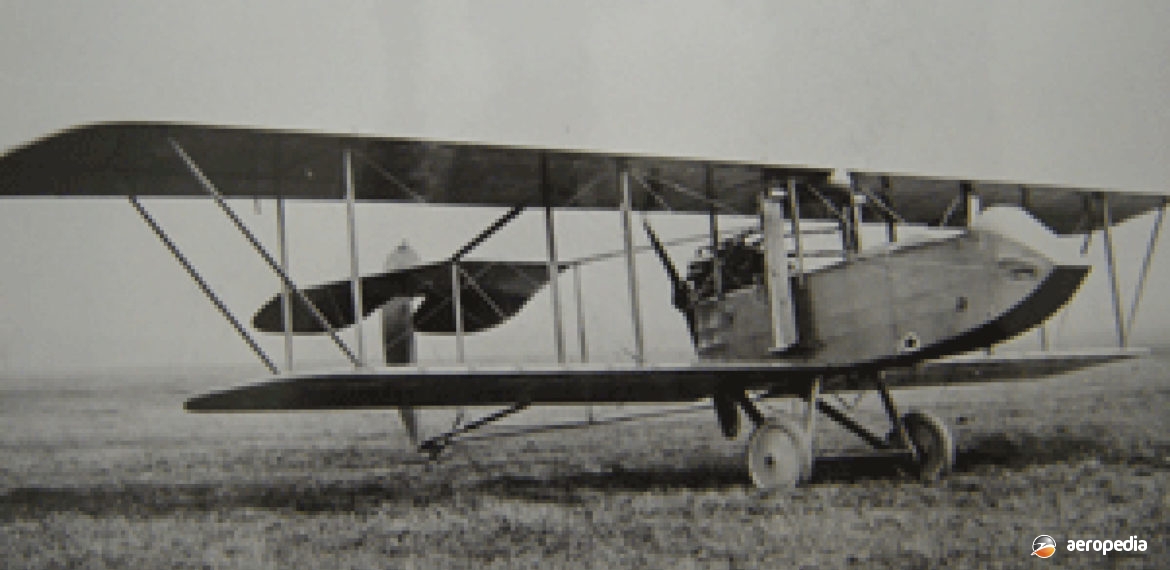Photograph:
A Burgess Gunbus in the United States (unknown)
Country of origin:
United States of America
Description:
Fighter aircraft
Power Plant:
One 104 kw (140 hp) Sturtevant 5 eight-cylinder VEE liquid-cooled engine
Specifications:
- Wingspan: 13.71 m (45 ft)
- Length: 9.6 m (31 ft 6 in)
- Max speed: 137 km/h (85 mph)
- Minimum speed: 76 km/h (47 mph)
- Endurance: 4 hours
- Loaded weight: 417 kg (920 lb)
History:
The W Starling Burgess Co of Marblehead, Massachusetts, USA which had been for some years manufacturing speedboats, produced a Curtiss-designed seaplane with a pusher engine located at the rear of the wings. The success of this machine led the Company to build a series of aircraft known as the Models B and C, these becoming known with the US Army as the Model F (Serials 11 and 18).
In 1912 the Company produced seven examples of what was known as the Model H, a trainer fitted with a 52 kw (70 hp) French Renault engine, three of these being converted to seaplane configuration. These had wing-warping for lateral control and were operated at the Army Training School at North Island, San Diego. Four were re-designed and rebuilt by Grover C Loening at San Diego and used aileron controls, the Wright control levers being replaced by Curtiss controls with a wheel for rudder and shoulder yoke for the ailerons. One Burgess H (serial 28) had extra fuel tanks installed and, flown by Q B Jones, set a world endurance record for a machine carrying three persons on 12 March 1915 of seven hours and five minutes.
In 1913 the Burgess Model I appeared (serial 17). This was fitted with a 45 kw (60 hp) Sturtevant engine and was operated in the scout role in The Philippines until it crashed in 1915.
A number of other designs were developed and manufactured by the Company, including the Burgess-Dunne Tailless (serial 36) with a 149 kw (200 hp) liquid-cooled Canton-Unne radial engine, which was evaluated by the US Army in San Diego.
Another design was the Burgess Model O Gunbus ordered for the British Royal Navy on 23 May 1915 with the first delivery being made on 28 July that year. The first aircraft was flown during June at Squantum, Massachusetts with Frank Coffyn and Harry Busteed of the Royal Navy Air Service (RNAS) as crew.
After further discussion and testing the aircraft was re-designed and a new aircraft was completed in 21 days, this being a two-seat reconnaissance aircraft with the Sturtevant D-5 engine. A total of 36 was completed (serials 3657 to 3681 and 8258 to 8268). However, the type was not particulary successful and none were delivered for service but examples were sent to the Isle of Grain and to No 4 Wing at Eastchurch in Kent. They were then placed in storage at the Central Stores Depot at White City in Greater London and by mid 1916 were condemned.
One example of the Model O Gunbus seems to have come to Australia but its acquisition and shipment is very obscure. Mr H V McKay wrote to the Department of Defence on 30 July 1917 offering the aeroplane for its use. A reply was received thanking him for his generous offer, and correspondence refers to “it will be of great use in the Central Flying School”. Correspondence also referred to “with an Aeroplane Engine and a sample Burgess Aeroplane…” and “effecting the removal of the machine and engine to Point Cook”. When it arrived it was found the machine was far from complete, “but in addition, is of a type condemned by the Imperial Authorities”. It was not considered the expense necessary to rebuild and complete the aircraft would be warranted, particularly as requisite parts were missing, and there was also the cost of erection. It would thus seem that one of the English machines was brought to Australia for McKay and it is assumed it was probably later scrapped.
However, the engine survived. A Sturtevant engine Type 5 No 5052 with a 4 in bore and 5.5 in stroke producing 104 kw (140 hp) at 2,000 rpm, probably from this aircraft, was used for training for a few years, and records have indicated the aircraft was used for spare parts. For many years the engine saw service in a speedboat around Port Phillip Bay, VIC and was, on retirement, placed in the collection of the RAAF Museum at Point Cook, VIC. The engine was eventually placed on display at the Museum of Victoria.
B F Sturtevant Co of Hyde Park, Boston, Massachusetts was a large engineering firm which at one stage produced a “battle” aeroplane of naval type to the design of Grover C Loening.

